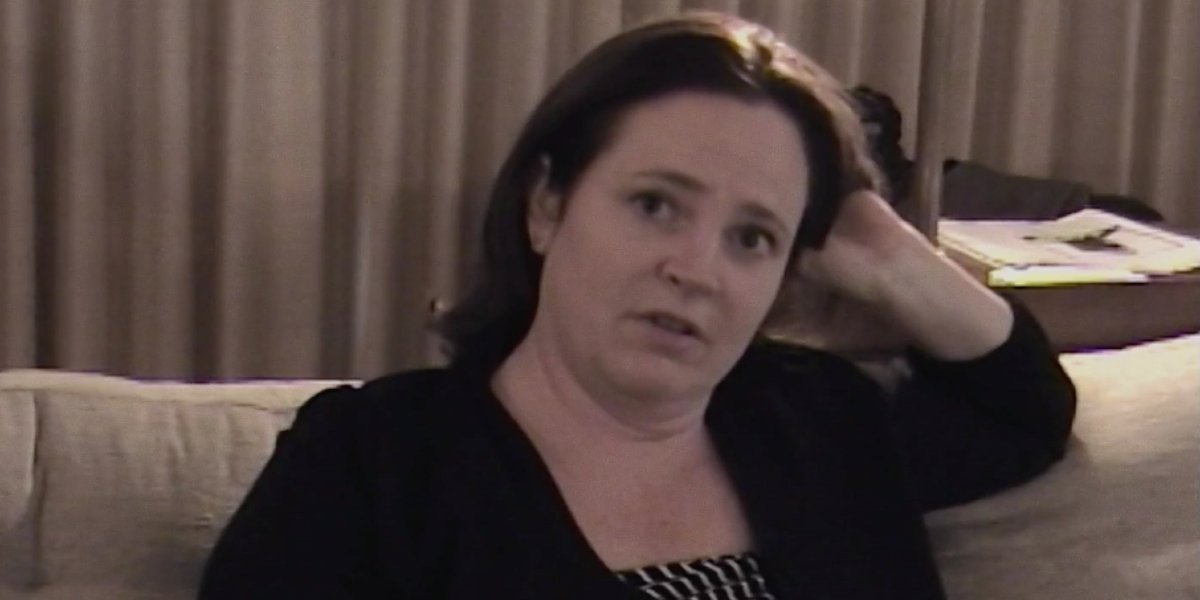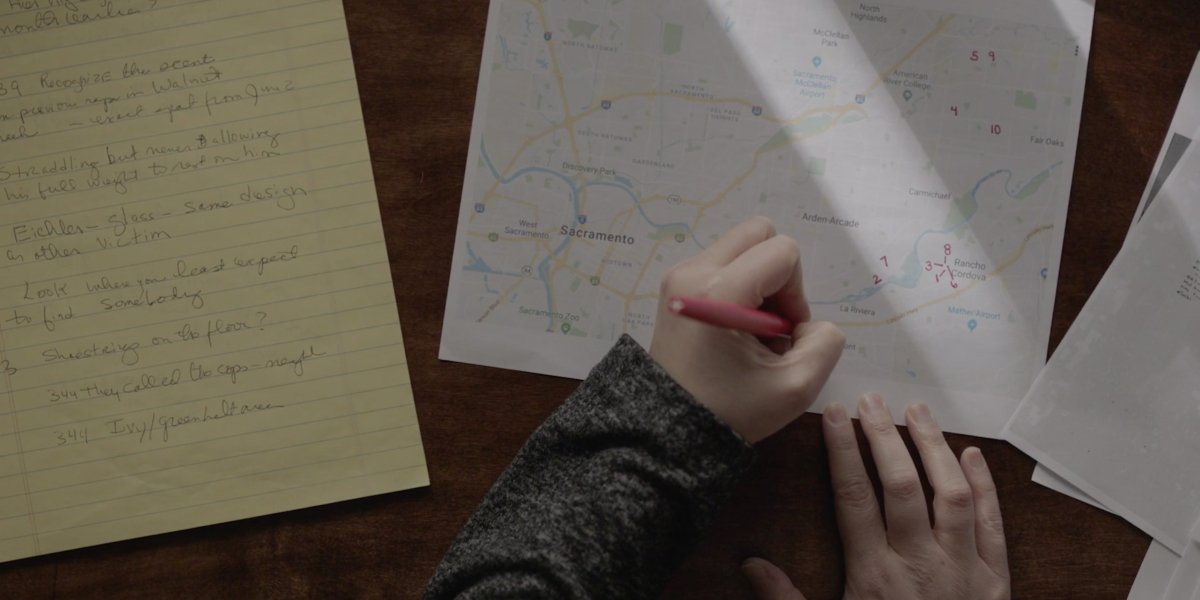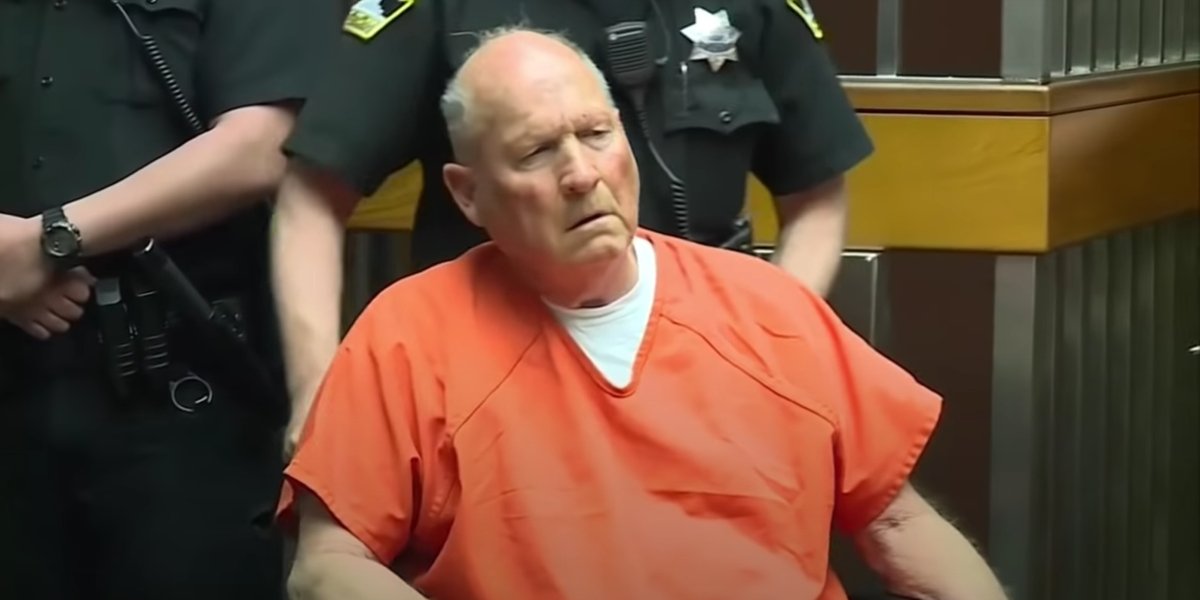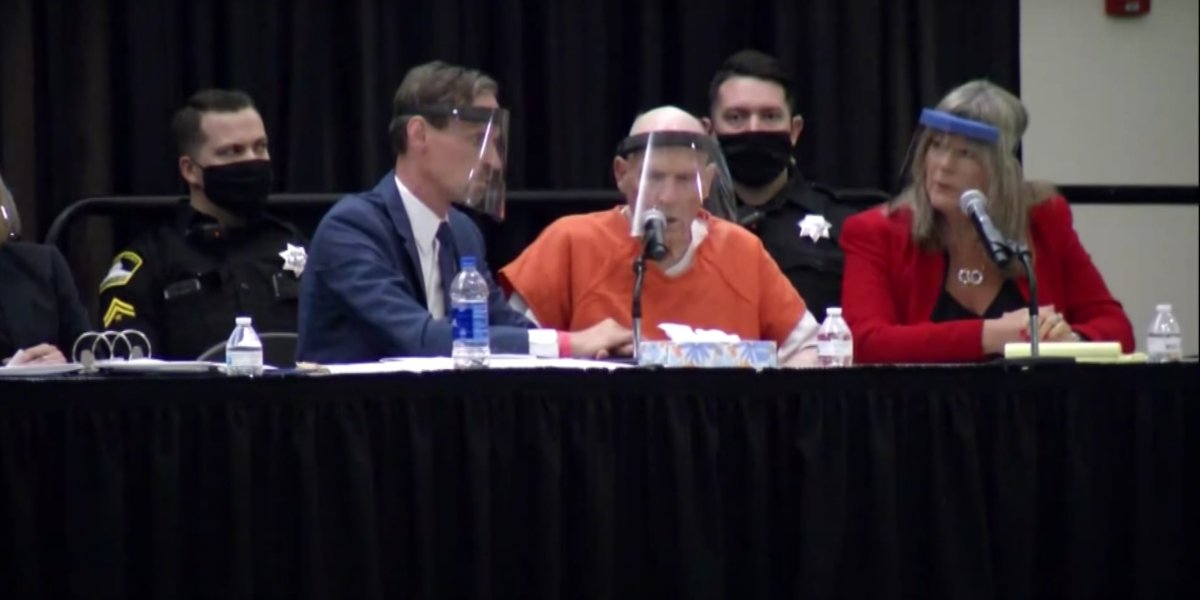HBO's I'll Be Gone In The Dark: 7 Facts About The Golden State Killer Case

The Visalia Ransacker, the East Area Rapist, and the Original Night Stalker cases are some of the most the shocking and gruesome crime sprees to be carried out in the state of California, but each of these three monikers doesn't describe a cadre of fiendish criminals, they're all the work of one man — the Golden State Killer, real-name Joseph James DeAngelo. The exploits and capture of one of the worst criminals to roam the backyards and alleyways of three Golden State cities recently reentered the public consciousness thanks to the HBO docuseries I'll Be Gone In The Dark, which followed the work of true crime writer and late wife of Patton Oswalt, Michelle McNamara as she tried to get to the bottom of the one-time cold case.
And while many watching HBO's latest great crime docuseries are probably aware of the case, the years of obsessive work Michelle McNamara put into trying to uncover the identity of the Golden State Killer and his multiple other nicknames, as well as the shocking outcome of the case, there may be some who are just now hearing about some of the perpetrator's heinous crimes against the men and women of California. So, for those of you out there who just stumbled across the latest great true crime series, I'll Be Gone In The Dark, here is some basic info about the Golden State Killer, his crimes, and how he was brought to justice more than 40 years after his reign of terror began.

The Man Who Would Become The Golden State Killer Started As The Visalia Ransacker
The Golden State Killer didn't start his dark path into criminality with vicious rapes or senseless murder, no, just like other serial rapists and killers, the man who would become known as one of the most notorious criminals California had ever seen started with burglary and voyeurism before escalating things. Between March 1974 and December 1975, the Visalia Ransacker as he would be later be called, committed as many as 120 crimes though authorities believe there are more, but they can't trace them back to him.
According to a 2019 article in the Sun Gazette newspaper, the Visalia Ransacker would steal items of low value like coins, necklaces, and other small valuables from the homes in which he would burglarize. The same article reported that the Ransacker escalated his criminality on September 11, 1975, when he shot and killed Claude Snelling after the man caught the prowler attempting to drag his 16-year-old daughter through their backyard. The crime spree would last for several more months until it abruptly ended in December 1975, but this wasn't the end for the man who would become the Golden State Killer.

He Became Known By Authorities As The East Area Rapist In Sacramento
Eighteen months after the final confirmed spotting of the Visalia Ransacker, the Golden State Killer turned 200 miles north to the California Capital Sacramento, where he would later be called the East Area Rapist by local media and authorities. Between June 1976 and July 1979, the East Area Rapist committed at least 50 rapes and at least two murders around the Sacramento area, leaving local communities in fear that they were next.
According to a May 1977 report by the Associated Press (via Gettysburg Times), the East Area Rapist initially targeted women in middle to upper-middle-class neighborhoods when a man wasn't present in the home, but as the months went by he became bolder and began raping women in the presence of their husbands. In these cases, he would have the woman tie up her husband or boyfriend and then place a stack of dishes on the man's back before telling him that if heard the dishes rattle he would kill them all.
The nature of the crimes would take an even darker turn in early 1978 when the East Area Rapist shot and killed Brian and Kate Maggiore while the couple walked their dog late one night. This was just a precursor of things to come for the Golden State Killer as he would take his violent nature to Southern California the following year.
Your Daily Blend of Entertainment News

He Then Became Known As The Original Night Stalker In Southern California
The last known attack by the East Area Rapist occurred in the early morning hours of July 5, 1979, in the Danville area of Contra Costa, California. Several months later, however, the Golden State Killer would pop up in Southern California, this time known as the Night Stalker before being named the Original Night Stalker to avoid confusion with Richard Ramirez who would become known in the media as the Night Stalker, according to the Los Angeles Times.
The first of seven attacks happened on October 1, 1979, in Santa Barbara County, where the Original Night Stalker attempted to murder a couple after breaking into their home and tying them up. The victims of the next attack on December 30, 1979, weren't as lucky and were both found shot to death in a Goleta condominium. The string of home break-ins, rapes, and murders would plague the Santa Barbara, Ventura, and Orange Counties through July 1981, though the Original Night Stalker did briefly reappear for the murder of Janelle Cruz on May 4, 1986. Previously not believed to be connected to the previous attacks, the Cruz murder was later attributed to the Original Night Stalker through DNA.

Investigators Traced DNA Back To The Golden State Killer's Great-Great-Great Grandparents To Uncover His Identity
Attempts to uncover the identity of the Golden State Killer were fruitless in the four decades since he first went on the attack, but thanks to advances in the DNA research, one of the investigators on the case, DNA expert Paul Holes was able to trace the killer's genetic material back to his great-great-great-grandparents. According to a 2018 piece in the Washington Post, Paul Holes and his team of researchers were able to trace the DNA material back to the early 1800s, at which point they created roughly 25 family trees with thousands of relatives leading up to the present day.
By looking over thousands of documents including census records, obituaries, gravesite locators, and multiple databases, Holes and his team were able to uncover the identity of a single suspect to at least 13 murders, 50 rapes, and 100 burglaries, tying together the Visalia Ransacker, East Area Rapist, and the Original Night Stalker.

Joseph DeAngelo Was Arrested And Charged In Connection With The Crimes In April 2018
On April 24, 2018, in the city of Citrus Heights, just outside Sacramento, California, local authorities arrested 72-year-old Joseph DeAngelo who they believed to be the Golden State Killer following the lengthy DNA analysis overseen by Paul Holes. According to CBS Sacramento, investigators trailed DeAngelo for four days before pulling a DNA sample from the handle of his car and then collected another sample from a tissue he had thrown away at his home.
After matching Joseph DeAngelo to the crimes, authorities swiftly arrested the one-time police officer who served in a neighboring police department not far from the burglaries and murder committed as the Visalia Ransacker. In the weeks following his arrest, DeAngelo was charged with a total of 13 counts of first-degree murder, but the more than 50 cases of rape at least 100 burglaries couldn't be brought against him due to the statute of limitations on those types of cases, according to Rolling Stone.

Joseph DeAngelo Pleaded Guilty To The Crimes Of The Golden State Killer In June 2020
According to the same Rolling Stone report mentioned above, the Joseph DeAngelo murder case could have potentially lasted 10 years and cost California taxpayers upwards of $20 million before it was all said and done, but it all wrapped up a little more than two years following his arrest.
In June 2020, Joseph DeAngelo pleaded guilty to 13 murder charges and kidnapping charges in connection with the more than 50 rapes he committed during his reign of terror. Unlike so many of his victims, the Golden State Killer wasn't given a death sentence, instead, receiving a life sentence and will spend the rest of his days locked away in the California state prison, according to the New York Times.

Michelle McNamara's Coverage Of The Golden State Killer Led To His Arrest, But The Author Didn't Get To See The Result Of Her Work
As you saw in the opening episode of HBO's I'll Be Gone in the Dark, the Golden State Killer case really came into prominence in the early 2010s thanks to Michelle McNamara and her obsession over solving the case on her blog, True Crime Diary, which featured multiple entries on the elusive serial killer in the years before she wrote the book on which the new HBO series is based. But nearly two years to the date that Joseph DeAngelo was arrested for his actions some 40 years earlier, McNamara died in her sleep never knowing the impact of her work.
Three years before her untimely death, Michelle McNamara coined the term "Golden State Killer" in the Los Angeles Magazine article "In the Footsteps of a Killer," to raise awareness for the still-unsolved murders, rapes, and burglaries decades earlier. And less than two months after McNamara died as a result of a combination of an unknown medical condition and drugs in her system, the FBI made a push to identify the suspect in connection with the crimes. Less than two years after that, Joseph DeAngelo was brought to justice and forced to pay for ruining the lives of so many people.
Now that you have the basic information of the Golden State Killer and his various other nicknames, continue the story with the HBO true crime series I'll Be Gone in the Dark, with new episodes airing each Sunday night. Now if we can just get someone to solve the Zodiac killer case.

Philip grew up in Louisiana (not New Orleans) before moving to St. Louis after graduating from Louisiana State University-Shreveport. When he's not writing about movies or television, Philip can be found being chased by his three kids, telling his dogs to stop barking at the mailman, or chatting about professional wrestling to his wife. Writing gigs with school newspapers, multiple daily newspapers, and other varied job experiences led him to this point where he actually gets to write about movies, shows, wrestling, and documentaries (which is a huge win in his eyes). If the stars properly align, he will talk about For Love Of The Game being the best baseball movie of all time.
